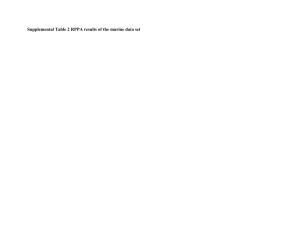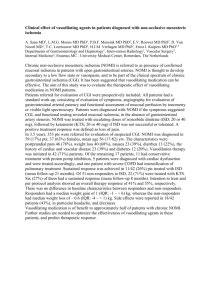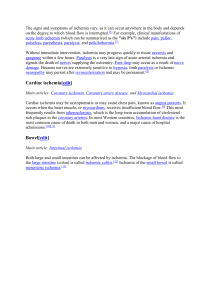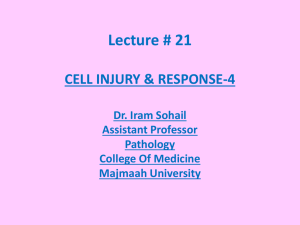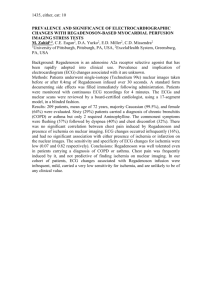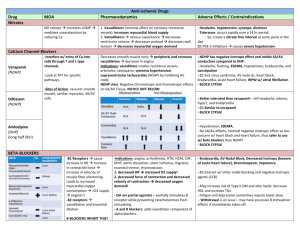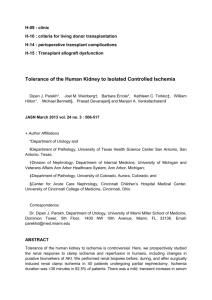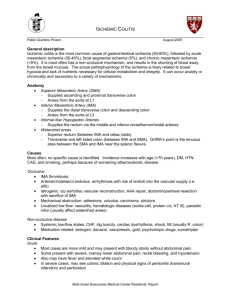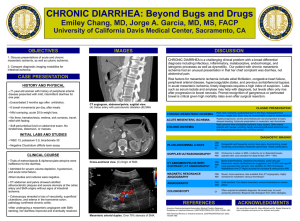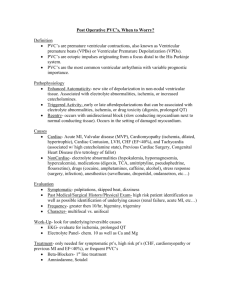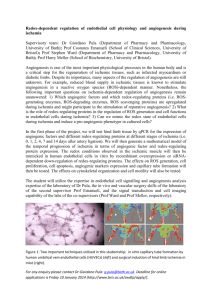Abdominal Migraine, a new entity in the spectrum of splanchnic
advertisement
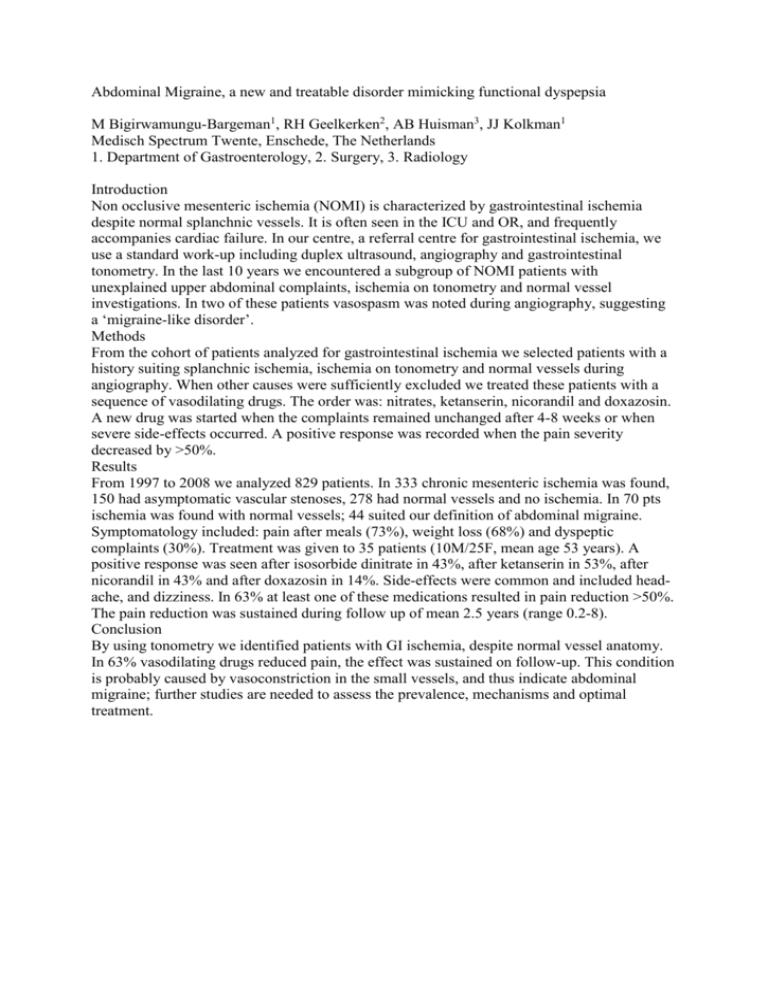
Abdominal Migraine, a new and treatable disorder mimicking functional dyspepsia M Bigirwamungu-Bargeman1, RH Geelkerken2, AB Huisman3, JJ Kolkman1 Medisch Spectrum Twente, Enschede, The Netherlands 1. Department of Gastroenterology, 2. Surgery, 3. Radiology Introduction Non occlusive mesenteric ischemia (NOMI) is characterized by gastrointestinal ischemia despite normal splanchnic vessels. It is often seen in the ICU and OR, and frequently accompanies cardiac failure. In our centre, a referral centre for gastrointestinal ischemia, we use a standard work-up including duplex ultrasound, angiography and gastrointestinal tonometry. In the last 10 years we encountered a subgroup of NOMI patients with unexplained upper abdominal complaints, ischemia on tonometry and normal vessel investigations. In two of these patients vasospasm was noted during angiography, suggesting a ‘migraine-like disorder’. Methods From the cohort of patients analyzed for gastrointestinal ischemia we selected patients with a history suiting splanchnic ischemia, ischemia on tonometry and normal vessels during angiography. When other causes were sufficiently excluded we treated these patients with a sequence of vasodilating drugs. The order was: nitrates, ketanserin, nicorandil and doxazosin. A new drug was started when the complaints remained unchanged after 4-8 weeks or when severe side-effects occurred. A positive response was recorded when the pain severity decreased by >50%. Results From 1997 to 2008 we analyzed 829 patients. In 333 chronic mesenteric ischemia was found, 150 had asymptomatic vascular stenoses, 278 had normal vessels and no ischemia. In 70 pts ischemia was found with normal vessels; 44 suited our definition of abdominal migraine. Symptomatology included: pain after meals (73%), weight loss (68%) and dyspeptic complaints (30%). Treatment was given to 35 patients (10M/25F, mean age 53 years). A positive response was seen after isosorbide dinitrate in 43%, after ketanserin in 53%, after nicorandil in 43% and after doxazosin in 14%. Side-effects were common and included headache, and dizziness. In 63% at least one of these medications resulted in pain reduction >50%. The pain reduction was sustained during follow up of mean 2.5 years (range 0.2-8). Conclusion By using tonometry we identified patients with GI ischemia, despite normal vessel anatomy. In 63% vasodilating drugs reduced pain, the effect was sustained on follow-up. This condition is probably caused by vasoconstriction in the small vessels, and thus indicate abdominal migraine; further studies are needed to assess the prevalence, mechanisms and optimal treatment.

